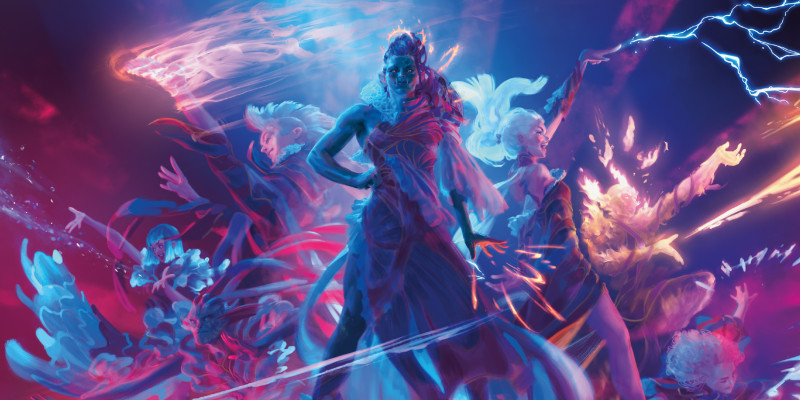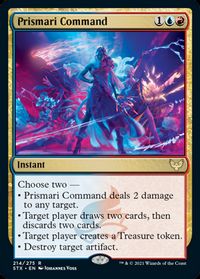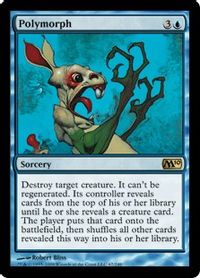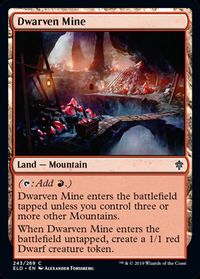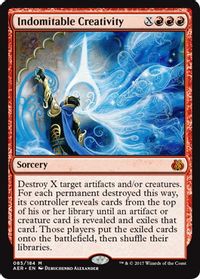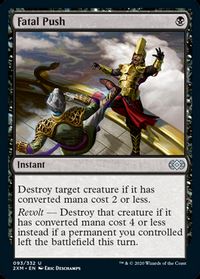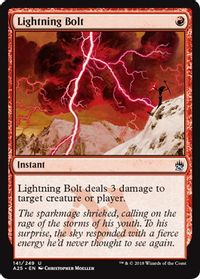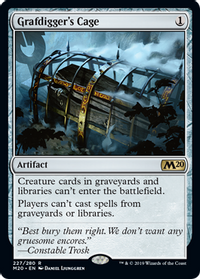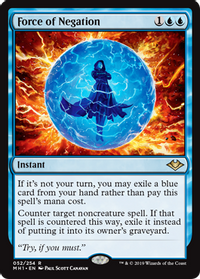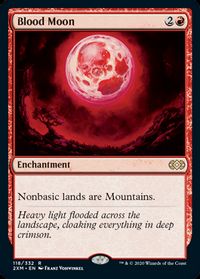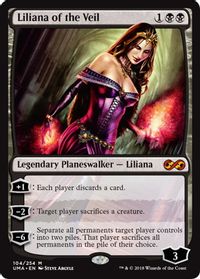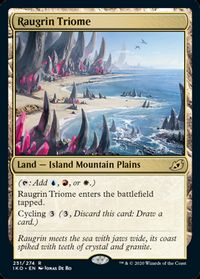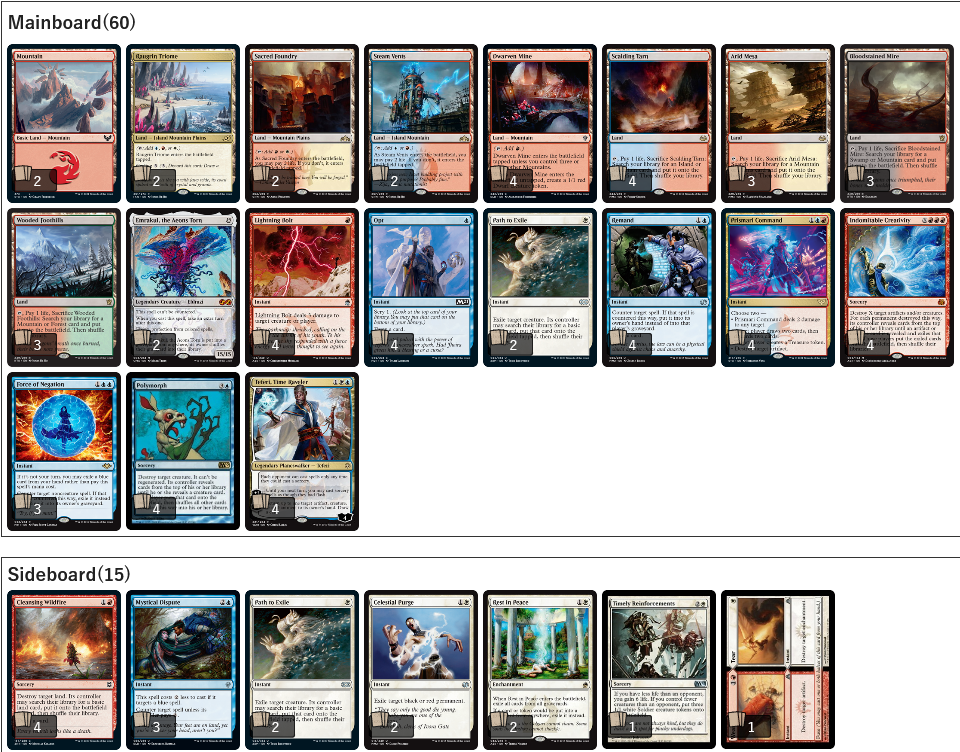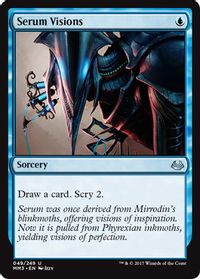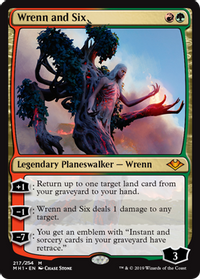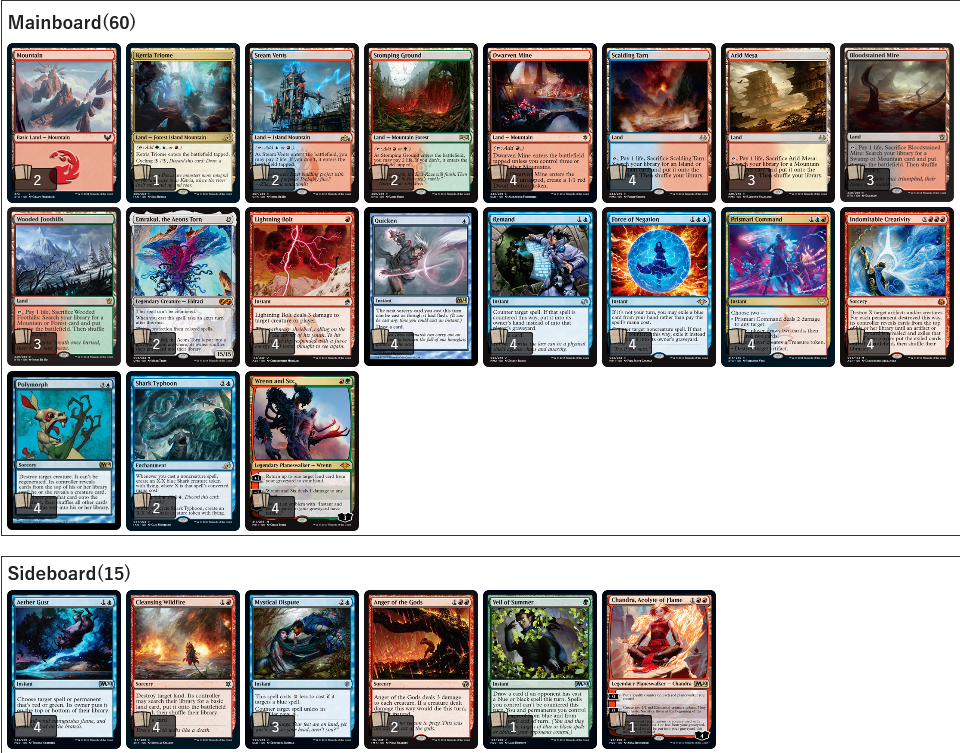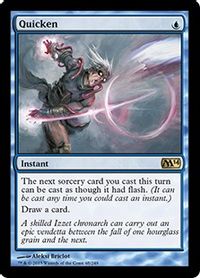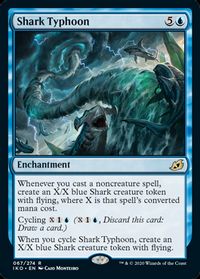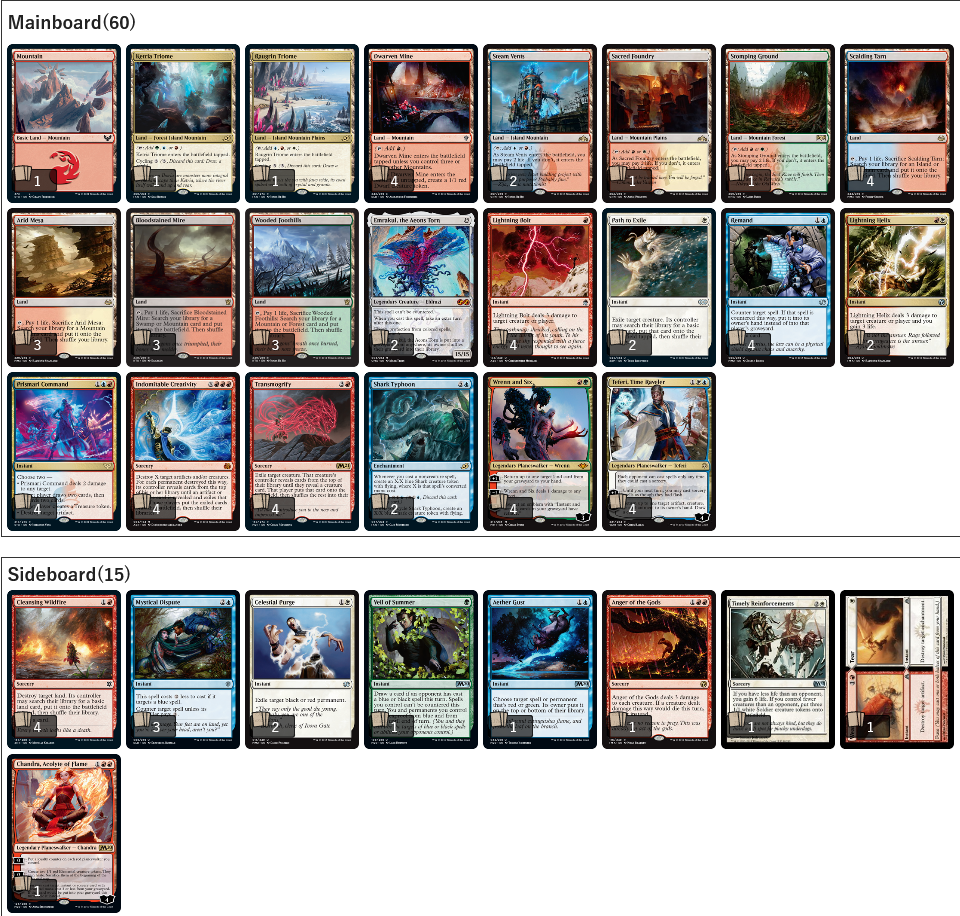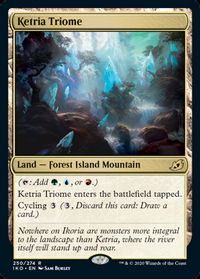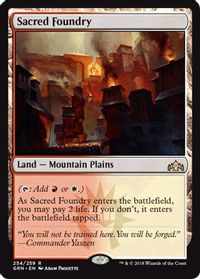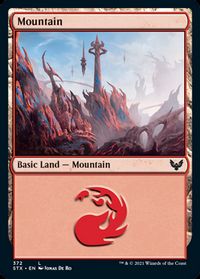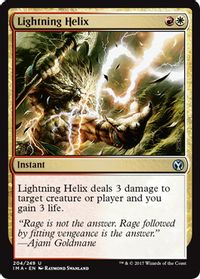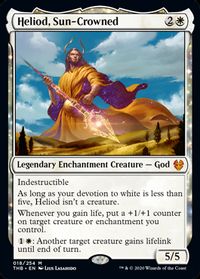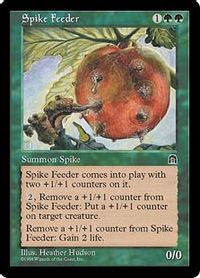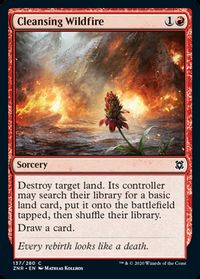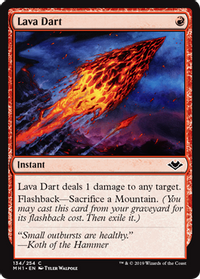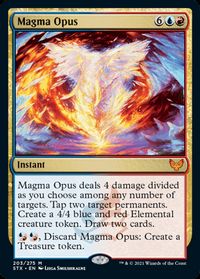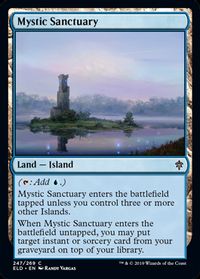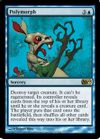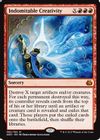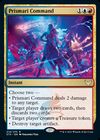Introduction
The cycle of new commands were among the first things to be spoiled from Strixhaven, and shortly after I saw 《Prismari Command》 I had an idea to utilize it in the Modern 《Polymorph》 deck I’ve seen here and then since 《Dwarven Mine》 was released.
I noticed the card fulfilled multiple roles I wanted in the deck, the first being the ability to clear 《Emrakul, the Aeons Torn》 from your hand if drawn, which is always a big downside of playing combo decks that involve uncastable cards such as 《Emrakul, the Aeons Torn》.
The second was the ability to create a Treasure token, which I was excited to utilize with 《Indomitable Creativity》, now giving the deck a noncreature target to attempt to turn into 《Emrakul, the Aeons Torn》, making it much easier to beat removal spells.
Building the Deck
While not as popular until perhaps the release of 《Transmogrify》, the core of what makes this deck strong has existed since 《Dwarven Mine》 was released with Throne of Eldraine.
Obviously Throne of Eldraine had way more powerful things to offer, a lot of which have been banned, and some others are still lingering, but now that the wreckage has been settled a bit I think this archetype could be quite good in Modern.
With a mana base of entirely Mountains and red fetchlands, we can easily fetch up or play a 《Dwarven Mine》 on turn 4 to create a Dwarf token, this lines up perfectly with the cards 《Polymorph》, 《Transmogrify》, and 《Indomitable Creativity》 allowing us (if undisrupted) to put 《Emrakul, the Aeons Torn》 into play.
With as many as 16 red fetchlands, 4 《Dwarven Mine》, and twelve 4 mana sorceries that effectively do the same thing, we can streamline the deck to put a 《Polymorph》 effect on the stack targeting our own Dwarf token at a very high rate while also having the freedom to use our mana on interactive spells on turns 1-3.
Obviously that alone won’t always win, and something as simple as 《Fatal Push》 or 《Lightning Bolt》 on your Dwarf can prevent it, but it’s a great start when working on a combo deck to know that a deck can consistently “do its thing” if undisrupted.
We don’t have to play as many effective 《Dwarven Mine》 and 《Polymorph》 effects as possible to achieve a reliable consistency. I’ve found about 13-14 Fetchlands, 3-4 《Dwarven Mine》, and 8 《Polymorph》 effects to feel pretty reliable, but over time I could see the number 《Polymorph》 effects moving up and down depending on what else your deck has to offer.
On the topic of 《Polymorph》 effects, thanks to every land in our deck producing red, I’m confident that 《Indomitable Creativity》 is the best one. 《Polymorph》 just happens to be original and shortest to say, so I don’t mind calling this a “《Polymorph》 deck” even if certain versions may not even play the card 《Polymorph》, and only 《Indomitable Creativity》 and 《Transmogrify》.
《Indomitable Creativity》 comes with a lot of upside compared to the other two cards. As previously mentioned, the first is the ability to target an artifact, such as the Treasure token from 《Prismari Command》, leaving our opponent’s 1 mana removal spells stranded while we execute our combo.
The next most important feature of the card is the ability to cast it on more than one target. While still potentially losing to two cheap removal spells, the ability to cast it on two tokens is often the difference between winning and losing in interactive matchups.
Lastly, while it hasn’t come up for me yet, 《Indomitable Creativity》’s wording has it completely ignore the text of 《Grafdigger’s Cage》, which is just a nice bonus.
《Indomitable Creativity》 comes with some slight downsides, the first is a deck building cost of not being able to play any artifacts, and the second is that it can be taken by 《Inquisition of Kozilek》 while the others can’t. Right now the only artifact I’m somewhat sad about missing out on is 《Damping Sphere》, and in the black matchups 《Indomitable Creativity》’s ability to blank 《Fatal Push》 completely outweighs its incidental mana value of 3.
As far as weighing the power level of 《Polymorph》 and 《Transmogrify》 there are a few things to consider. Obviously if you find a shell without blue you can’t play 《Polymorph》, but if you are playing blue then I think it mostly comes down to if you’re playing with 《Force of Negation》 or not.
If you are playing with 《Force of Negation》 then you’ll take as many blue cards as you can get, otherwise 《Transmogrify》 has the bonus of not being easily targeted by 《Mystical Dispute》, while also just having a slightly better mana cost in a deck of only Mountains, as you might be able to find a spot where you cast it alongside a couple blue spells in the same turn that you wouldn’t be able to find with 《Polymorph》.
When I first started looking at 《Polymorph》 decks it seemed like 《Force of Negation》 was in almost every list, which didn’t make a ton of sense to me considering it doesn’t really help protect your combo, but after playing with 《Force of Negation》 in the deck I’ve come around on it.
It’s mostly just due to 《Force of Negation》 being a great card, but it also covers you in some indirect ways by answering a lot of problematic cards from your opponent, such as 《Blood Moon》 or Planeswalkers that can answer an 《Emrakul, the Aeons Torn》 from the battlefield.
When it comes to which colors to pair with red in the 《Polymorph》 deck there seems to be a slight consensus on Jeskai being the best color combination. The primary reason for this is to gain access to 《Teferi, Time Raveler》, which is a card that almost feels like an additional combo piece in the archetype.
《Teferi, Time Raveler》 not only prevents your opponent from interacting with your Dwarf or countering your 《Polymorph》, but it also gives you the ability to cast 《Polymorph》 on your opponent’s end step and dodge a lot of the potential sorcery speed answers to 《Emrakul, the Aeons Torn》.
The issue with 《Teferi, Time Raveler》 is his mana cost makes him somewhat difficult to cast in a 《Dwarven Mine》 manabase. This problem has been somewhat alleviated by the existence of 《Raugrin Triome》, though it’s still a slight issue that a single Triome still requires you to find another land to produce either white or blue.
Three Polymorph Decks
Jeskai Polymorph
With all of these pieces together we have a strong core for a Jeskai 《Polymorph》 deck, and after a bit of playing I’ve found this to be the list I’m liking the most:
《Remand》 is pretty common among 《Polymorph》 decklists and still feels strong enough to make the deck.
《Opt》 competes somewhat with 《Serum Visions》, but I think comes out ahead for a couple of reasons. Being an instant will naturally play much better with the other instants in the deck, but also with this deck being incredibly fetchland heavy it might be difficult to keep two cards on top without having to shuffle one away before you have access to it. While I do think 《Serum Visions》 long term selection could pair a lot better with this deck’s need for its first four land drops, I’m guessing 《Opt》 will feel a lot smoother overall.
Hitting land drops is a somewhat serious hurdle for the deck that can’t be taken for granted. While 25 lands and 16 cards that can draw cards make the miss rate rather uncommon, it can be a serious issue when you miss when you build your entire deck around 4 mana sorceries. This made me consider my current favorite card to build decks with in Modern, 《Wrenn and Six》.
Temur Polymorph
I believe 《Wrenn and Six》 is the most underplayed card in Modern right now. Obviously in Legacy she was too powerful alongside 《Brainstorm》 and 《Wasteland》, and I would also say she was definitely too powerful alongside 《Mystic Sanctuary》 and 《Field of the Dead》 in Modern.
Now that some of her synergies have been lessened, I think there are still a lot of angles to explore. I mostly think a lot of decks playing her aren’t capitalizing on some core deck building aspects that I believe you need to pair with her, such as playing 20 or more lands that produce red or green mana, and having at least 13 ways to get a land in your graveyard by turn 2.
In addition to that you’ll likely want some payoff to having access to so many lands, such as 《Jace, the Mind Sculptor》, or in the case of the 《Polymorph》 deck, 《Prismari Command》. Here is my current list:
While 《Quicken》 isn’t the most exciting to me, I think it plays out surprisingly well in this Temur variant. The deck still wants a good amount of blue cards for 《Force of Negation》, and without 《Teferi, Time Raveler》 we maintain having access to instant speed 《Polymorph》.
I think 《Wrenn and Six》 also plays a big role in the playability of 《Quicken》, as in order for it do what you’re hoping for you need to be hitting your 5th land drop. It also allows us to actually make 《Force of Negation》 protect our combo, while it’s definitely a bit of a perfect storm, having 《Quicken》, 《Force of Negation》, 《Polymorph》/《Indomitable Creativity》, and another blue card can still come up in the occasional game.
《Shark Typhoon》 is mostly filling a blue card flex spot and can be nice with the extra mana from 《Wrenn and Six》. I’m not attached to the slot needing to make a token, as I strongly believe 《Dwarven Mine》 is all you need in the first place, but the 《Shark Typhoon》 have felt fine in helping us assemble some pressure and force our opponents to use their only removal spell in a longer game.
《Wrenn and Six》 has felt great at giving us a different angle of attack, rather than just being all in on putting 《Emrakul, the Aeons Torn》 into play. While almost every win will result in 《Emrakul, the Aeons Torn》 coming into play, the threat of 《Wrenn and Six》 can be the reason your opponent isn’t able to stop your main game plan.
It also allows you to do a “removal check” more frequently, with the extra supply of fetchlands you can consider just trying to put 《Polymorph》 or 《Indomitable Creativity》 on the stack 2 or 3 turns in a row and forcing your opponent to have an answer each time.
This deck also just has a lot less mana issues, without a double off color card like 《Teferi, Time Raveler》, and 《Wrenn and Six》 effectively feeling like a mana source. With that being said I still miss the “free win” games that having 《Teferi, Time Raveler》 offers me, and I’ve explored the option of including both 《Wrenn and Six》 and 《Teferi, Time Raveler》 in the same deck.
Four Color Polymorph
This first thing you’ll notice is the omission of 《Force of Negation》, while I think they could still be fine to play (switching 《Transmogrify》 to 《Polymorph》), I like the additional removal in 《Path to Exile》 and 《Lightning Helix》 in order to both protect our Planeswalkers and our life total as we will have to more aggressively shock ourselves with four colors.
After playing a few games with the deck I got used to the sequence of finding 《Ketria Triome》 on turn 1, and using 《Sacred Foundry》 and Basic 《Mountain》 as my next two lands to be able to curve 《Wrenn and Six》 into 《Teferi, Time Raveler》 in the least painful way.
With both 《Lightning Helix》 and 《Shark Typhoon》 this deck has a much higher likelihood to win without 《Emrakul, the Aeons Torn》 than all the other versions, even the Dwarves can help chip in and are quite relevant against Esper Control particularly, which seems to be increasing in popularity. With so many Planeswalkers the Dwarves are also a lot more likely to show up just to chump block, which is just another fine use for 《Dwarven Mine》 in general.
I’ve liked this version the most so far, it turns out 《Wrenn and Six》 and 《Teferi, Time Raveler》 are just great cards and they make your deck feel more powerful. I think a potential lesson from this deck is also that the other lists could only be playing 1 《Mountain》 as well, as normally a big reason to play more basics is to have the option of fetching a painless untapped land when you need it, but 《Dwarven Mine》 can already fulfill that role a lot of the time anyways. It always feels a bit risky only playing 1 basic in Modern, but 《Path to Exile》 is both at an all time low and not that good against you, and 《Wrenn and Six》 prevents you from getting too hosed from 《Field of Ruin》.
Matchups Notes
So far in my practice with the deck I’ve come across a surprising amount of black and/or blue interactive decks which you’d think would be really poor matchups but I’m actually quite impressed by how much I’m winning against them anyways. In reality you’re playing what’s really close to a 1 card combo, so discard, counterspells, and removal, while extremely tempo positive for your opponent, only play out like a 1 for 1 in game. On top of that 《Teferi, Time Raveler》 and 《Indomitable Creativity》 just give you draws that can beat interaction a lot of the time anyways.
If your opponent has a great mix of disruption and pressure they’ll probably beat you, but sometimes they don’t actually have it all. If they have a lot of pressure then you’re usually forced to try to go for the 《Polymorph》 and hope it works, and sometimes you even have the luxury of doing it again the following turn. Playing this deck and being forced to put your opponent to the test is a great learning experience for how often it actually works.
Sometimes your Jund Shadow opponent just doesn’t actually have the 《Fatal Push》/《Lightning Bolt》 they’re representing and your turn 4 《Polymorph》 works out. This deck also gets an edge from being rather unknown right now, as your opponent might not realize they should leave up a removal spell going into your turn 4.
Right now the popularity of 《Lurrus of the Dream-Den》 has pushed 《Liliana of the Veil》 out of the black decks, which also helps as they don’t have an answer to 《Emrakul, the Aeons Torn》 in play. If you do play against a deck with 《Liliana of the Veil》 you still have a lot of play against it, such as an end step 《Polymorph》 with 《Quicken》 or 《Teferi, Time Raveler》, or just having some extra Dwarves or fetchlands available after you put 《Emrakul, the Aeons Torn》 into play.
A big appeal to this deck for me is its Selesnya Heliod matchup. Right now they are pretty unprepared for interacting with you, and a 2nd 《Emrakul, the Aeons Torn》 in the deck means that if you get the first into play you can beat infinite life by annihilating them the entire game while you discard the 2nd to hand size.
On MTGO you’ll likely just deal enough damage with 《Emrakul, the Aeons Torn》 before they run out of cards, but if they do actually gain enough life, it’s pretty easy to just yield through every turn once they have no permanents, and click 《Emrakul, the Aeons Torn》 to attack and a card to discard each turn in order to execute the win using minimal clock. It’s also nice to know that you’d win even if they gained something like a billion life, instead of the normal few hundred you’ll face on MTGO.
Right now I’d actually say the matchup I’d like to face the least is any deck with 《Blood Moon》. It’s a strange feeling to be a deck of only Mountains that’s incredibly bad against 《Blood Moon》, but if one sticks without an immediate answer or a token already in play you’re basically dead.
This could be solved somewhat with more cards that could generate tokens for only red mana, which is part of why you’ll see 《Chandra, Acolyte of Flame》 in my sideboard. I don’t think it’s the strongest card, but I like the idea of it, particularly with 《Wrenn and Six》 in my deck as you could curve 《Wrenn and Six》 into 《Chandra, Acolyte of Flame》 and get an extra loyalty on your 《Wrenn and Six》 as well. I also like the application of being able to cast 《Indomitable Creativity》 with it, giving a lot of minor synergies with the deck overall.
Another matchup I’m not excited for is Tron, which is why you’ll see 4 《Cleansing Wildfire》 in all of my sideboards. I think with the 《Cleansing Wildfire》 and 《Force of Negation》 it’s a good matchup, but it’s mostly just annoying that cards like 《Karn, the Great Creator》, 《Ulamog, the Ceaseless Hunger》, and 《Oblivion Stone》 can all answer 《Emrakul, the Aeons Torn》.
I’m pretty used to Tron being a great reason to play combo deck, but turn 4 《Emrakul, the Aeons Torn》 alone will likely not get the job done against them, so you’ll need to disrupt them along the way.
Lastly the Prowess matchup is concerning, mostly off the back of 《Lava Dart》. If anything this is the matchup where I might be getting the highest amount of wins from my opponent not figuring out what my deck is doing in game 1 soon enough, because if they can find a window to cast 《Lava Dart》 on a turn where maybe they’re casting 《Opt》 or 《Lightning Bolt》 instead, they could still maintain a similar amount of pressure while keeping me from getting a quick 《Emrakul, the Aeons Torn》.
Once again 《Teferi, Time Raveler》 or 《Prismari Command》 + 《Indomitable Creativity》 make this matchup a lot easier.
Conclusion
I still think there’s a lot of room for exploration in the 《Dwarven Mine》 + 《Polymorph》 shell. I only touched on blue decks trying to put Emrakul into play, but I’ve also seen a few Gruul Valakut decks playing 《Transmogrify》, 《Indomitable Creativity》, and 《Primeval Titan》 as their only creature.
Having the core combo be entirely contained in red leaves a lot of options on the table, and I think in the past even with plenty of token generation, the idea of having to spend mana to generate a token at some point made the deck feel a lot clunkier than it is now.
I’m really excited to see 《Indomitable Creativity》 show up more in Modern, as I always thought it was an awesome card, and I’m hoping 《Prismari Command》 or maybe something like 《Magma Opus》 gives it what it needs for Modern.
I also just think these decks I’ve been working on are still exploiting the pushed power level of 2020 cards. 《Mystic Sanctuary》 was rightfully banned in my opinion, and I don’t think any of the other lands from the Throne cycle are close to as good, but they don’t need to be ban worthy to not be worth exploring. Being able to get meaningful value from your lands sort of breaks a lot of the variance in Magic, and thanks to fetchlands, Triomes, and shocklands we can consistently make these cards work in Modern.
As previously mentioned, the other card that continues to impress me is 《Wrenn and Six》. Before I played these 《Polymorph》 decks I was working a Temur Control deck that was basically built around abusing 《Wrenn and Six》 with 《Lonely Sandbar》 and 《Jace, the Mind Sculptor》, and what I’ve mostly learned is that turn 2 Wrenn on the play feels like an easy win a lot of the time.
Even if 《Wrenn and Six》 doesn’t run away with the game to an emblem every time, the fail case still feels like I’m drawing 2 lands and gaining 5+ life for 2 mana. Every now and then you even get the pleasure of killing an X/1, which has been happening a lot more frequently as I keep facing 《Hexdrinker》 out of BGx 《Lurrus of the Dream-Den》 decks.
Right now Modern feels pretty stable and none of the decks feel like they are too powerful, but it wouldn’t surprise me if in a year from now 《Wrenn and Six》 was banned.
I’m hoping to see more “《Polymorph》 decks” moving forward in Modern and I’m still going to be working on the archetype myself. If you think you have any great ideas for the archetype feel free to contact me on twitter @jacobnagro, and as always, thanks for reading.


